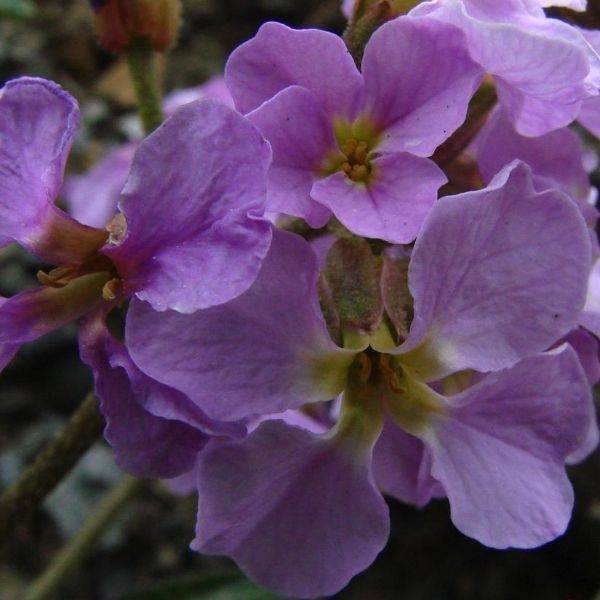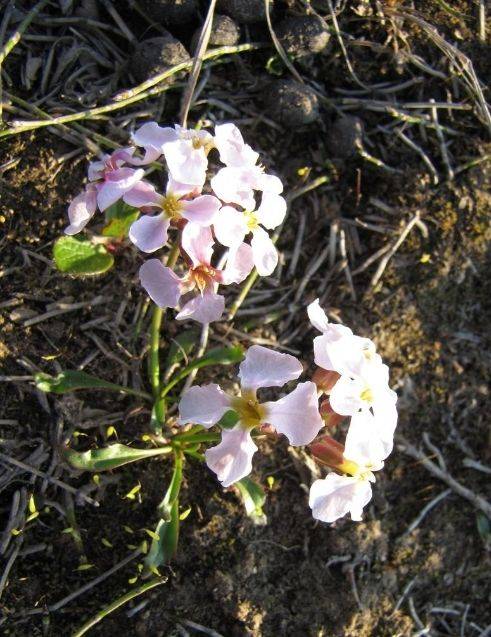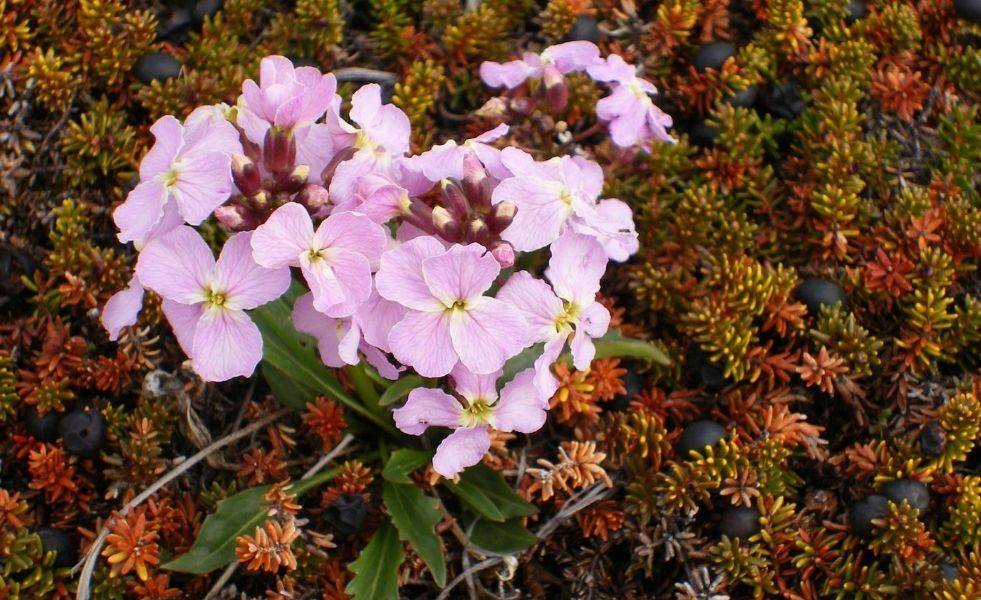Parry's Wallflower
Also called nakedstem wallflower
- Iñupiaq name: Masu Aiġaq
- Family: Brassicaceae
- Scientific name: Parrya nudicaulis
- Distinguishing characteristics: Strappy, gray-green leaves all growing from the base of the plant. Flower stem is completely leafless with large lavender flowers sprouting from the end. Flowers with a long corolla tube and four lobes (petals).
- Similar species: The fruits of this plant somewhat resemble pea pods, like those produced by members of the Fabaceae (Alpine sweetvetch, wild sweet pea, and Arctic lupine). To identify P. nudicaulis, look to the flowers: those of parry's wallflower are very simple with four petals, while members of the Fabaceae have very distinct, complex flowers.
- Habitat: Moist, sandy or rocky areas, often found growing near limestone deposits on hillsides.
- Best time to harvest: Late spring to early fall.
- Uses: Roots and leaves are edible, traditionally cooked and added to soup.

Photo by Alfred Cook via Alaska Wildflowers

Photo courtesy of the GVSU Arctic Ecology Program

Photo via Western Arctic National Parklands
